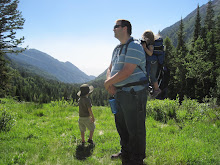If you have ever looked at guns on the Internet, then you
know that the best gun ever is either the Glock or the 1911. The Glock people
rave about the smooth, long, safe trigger of the Glock and its reliability.
1911 people gush about the inherent accuracy of the 1911’s single action
trigger, and the overall ergonomics of the 1911.
If you would like a gun that combines the good features of
each platform, then a Sig 229 in 9mm is the gun for you.
Now let’s talk about why this is such an awesome gun.
The Trigger
Sig’s traditional DA/SA trigger allows you to have the best
of both worlds. The long double action trigger negates the need for any on-off
safety. It is also very smooth. Some people spend lots of dollars on their
revolvers to get a smooth trigger, and it comes standard on the 229.
The other awesome half of the Sig’s trigger is the single
action. It is very crisp, and allows for fast, precise shots. 1911 aficionados
lavish praises on the crisp single action trigger. The Sig lets you have that
nice trigger pull without having to hit a safety to use it.
The DA/SA trigger also is a great training asset. After
you’ve taken a shooting class then you should be doing dry fire practice. The
most important sequence of motions that needs to become automatic is drawing
the gun and firing the first aimed shot.
With striker-fired guns, and single action guns, the slide
has to be racked or the hammer cocked back before the gun can be dry fired
again. Firing one shot, then racking the slide is not a good habit to
cultivate.
With the Sig, you can draw, aim, fire, re-holster and
repeat. You don’t have to rack the slide to reset the trigger.
Some say is that a long trigger pull followed by short ones
is inconsistent and a problem for training. However, good training will teach
you to pay attention to the trigger reset, which is consistent with every trigger pull in the Sig, just like any
other gun.
Operating the Gun
When shooting the 9mm 229, the heavier weight is a major
plus. The extra ounces soak up a lot of the recoil from already-low-recoiling
9mm round, making it very comfortable to shoot lots and lots of rounds through.
Sig has a very unique approach to reloading. Many companies
manufacture extended slide release levers as drop-in parts for 1911s, Glocks,
etc... With Sigs, it’s standard.
The slide release button sits far back on the grip, within
easy reach of your thumb. When you’ve reinserted the new magazine, you can
flick the release with your thumb while re-establishing your grip with your
support hand.
Some complain that this design is different from what they are
used to, and that their thumb rides the release during shooting.
However it is
possible to grip this gun without resting your thumb on the slide release.
If you like the idea of being able to easily and quickly hit
the slide release, and have the crisp single action trigger with no manual
safety, it is possible to learn to adjust your grip to a Sig. Most humans can
be taught how to drive standard or automatic transmission cars. If you are considering buying one,
don’t let this minor training concern dissuade you.
The sights are designed so that the bullet will land right
in the middle of the front sight, making it simple to aim. Just put the sights
right where you want the holes to appear, instead of trying to guess how far
above the sights the bullet might land.
Reliability
The rails on the frame and slide come polished pretty smooth
from the factory, which makes the slide cycle even with a minimum of oil. It will
cycle dry, though it will eventually start malfunctioning. I’ve never tried to
bury it or fill it with mud, and then shoot it, but it did function through an
all day class that took place inside an Iraq-style dust storm. Oiling this gun is no great chore.
Also, the Navy Seals use Sig 226s, 229’s bigger brother.
That says something about reliability.
Maintenance
Taking the gun apart is as easy as locking the slide back
and flipping a lever. The recoil spring and barrel easily come out, which
increase the likelihood that the owner will clean and lube the gun more. For routine maintenance, simply pull it
apart, rub a drop of oil around the square locking surfaces on the barrel, a
drop of oil at the front of the frame rails and at the back of the slide rails,
then put it back together.
This process shouldn’t need to be repeated more than once a
month.
A full day’s sweat day-in and day-out doesn't seem to bother
the stainless slide and aluminum alloy frame at all.
Concealment
I can conceal this gun on my body, however I am a 6 foot 3
inch male, with a bit of a gut. With the right combination of belt and holster,
I can tuck in a shirt over the top of it. If you’re a smaller frame, you may
have fewer options. Using a Galco belly band, makes the gun disappear. Other
holster and belt options are available that are more comfortable, but more
bulky as well, and so you have to adjust your dress accordingly.
Conclusion
If you are new to gun ownership, or are looking for an enjoyable
pistol to shoot, consider the 229 in 9mm. It’s good for a novice to develop
good training habits with, and is
a great choice for a multi-purpose gun. It’s not a Glock and it’s not a 1911,
but it is a good blend of the best features of each of those guns.


